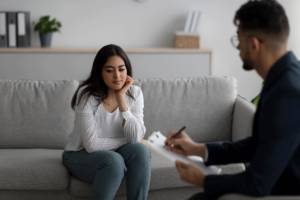
Trauma and Relationships: The Importance of Healing
Relationships can be challenging, even under the best of circumstances. However, when one or both partners have experienced trauma, the challenges can feel insurmountable. Trauma

Coping with Grief
Grief is a complex and often overwhelming experience that impacts each person uniquely. Whether it’s the loss of a loved one, a job, or any

Understanding the Different Types of ADHD
Attention-deficit/hyperactivity disorder (ADHD) is a condition that’s familiar to many but often misunderstood. This complex neurodevelopmental disorder is typically associated with symptoms such as difficulty

What to Expect from Mental Health Counseling in Fox Chapel
Mental health is a top priority for many individuals, and for good reason. Our emotional well-being greatly impacts our daily lives, relationships, and overall quality

Tips for People Living with OCD
Anxiety can take many forms and can significantly impact an individual’s life. One type of anxiety disorder is obsessive-compulsive disorder (OCD). Living with OCD can

Spravato® vs. Antidepressants: Which Is Right for Me?
New Directions Mental Health is dedicated to supporting your mental health. If you are experiencing suicidal thoughts, we encourage you to reach out for immediate
